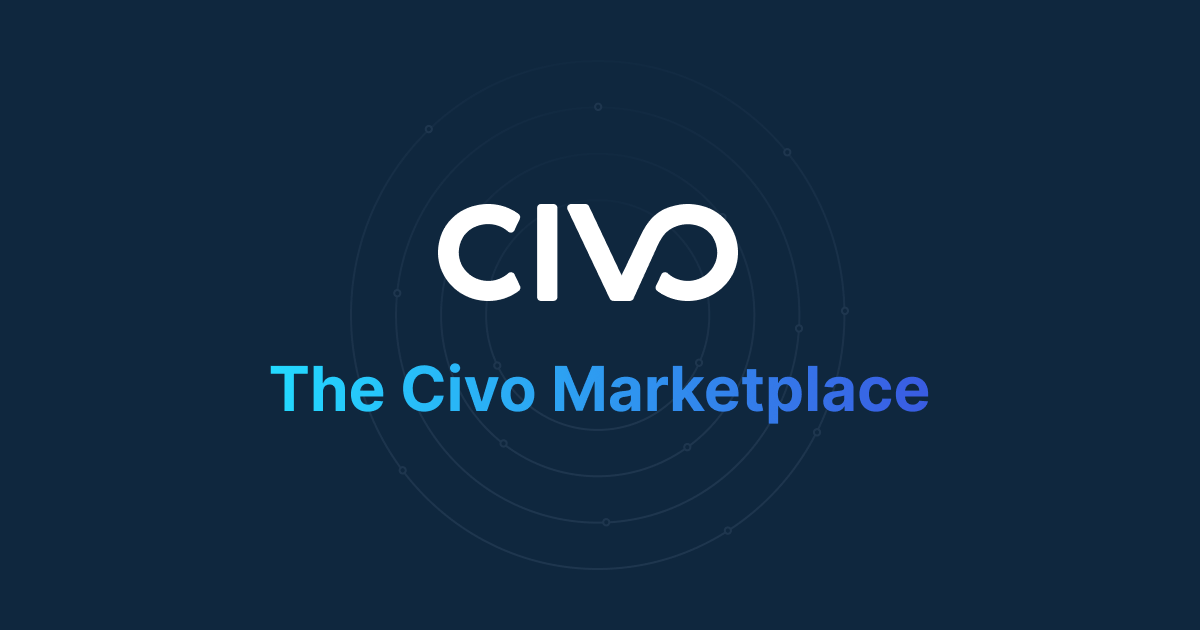Install kubefirst Directly From the Civo Marketplace
It's even easier now to create a new production-ready Kubernetes cluster with the cloud native open source tools you love on Civo. You can now use the Civo marketplace to install kubefirst.

You probably know it by now, but we are big fans of Civo. It was the first cloud we supported right after AWS. Until now, you were able to create a new cluster with all the kubefirst goodies on Civo using our CLI, or the UI installation, but we didn’t stop there: you can now use the Civo Marketplace to install kubefirst!
If you’re just joining us, kubefirst provides fully automated open source application delivery and infrastructure management GitOps platforms delivering the best cloud native tools with a single command.
Civo Marketplace
The Civo Marketplace let you install your favorite Kubernetes applications straight from the Civo dashboard or by using the Civo CLI. We also love the fact that it’s open source, like our GitOps Catalog.
What does that mean for kubefirst users you ask me. It’s even easier now to create the cluster 0, which is the equivalent of using the launch up command, but without having to install our CLI. It will install kubefirst on a cluster you already created, or you can also choose to create a new one. We suggest the latter as it’s an ephemeral kubefirst installation that won’t be needed once your management cluster is created.
For more information about Civo, their Marketplace, and using kubefirst from the Civo Marketplace, you can watch the recording (embedded above) of our livestream with Kai Hoffman, Developer Advocate at Civo.
Create your kubefirst cluster
To use kubefirst from the Civo Marketplace with the new cluster option, log into your Civo account and navigate to the Kubernetes tab. Click on “Create New Cluster”: you can reduce the node count to 1, but increase the node size to medium to ensure a flawless process.
In the Marketplace section (number 7), select the kubefirst tile. At this point, do not select anything else as this cluster will be used only to create your management cluster.
Once the cluster is created, you will need to download the KUBECONFIG file either by using the download option from the Civo dashboard or by using the Civo CLI with civo kubernetes config $CLUSTER_NAME > ./civo-installer-kubeconfig. Once you have the file, set the KUBECONFIG environment variable, and port forward your the console service:
cd <path-where-you-download-or-save-the-file>
export KUBECONFIG=$(pwd)/civo-installer-kubeconfig
kubectl --namespace kubefirst port-forward svc/kubefirst-console 8080:8080You can now access the kubefirst console application (which is used as an installer in that case) on http://localhost:8080.
From that point, you can create your new management cluster. Once it’s created, feel free to delete the first cluster you created using the marketplace installation as it’s not needed anymore.
What’s next
If you are attending Civo Navigate which is happening on September 5 and 6 in London, UK, John and Jared, kubefirst’s co-founders, will be there. They are giving two talks on the first day:
- Farming Cloud Native Platforms? Be Prepared for the Army of Chickens and Eggs!
- Mind the Gap! Bridging the Void Between IaC and GitOps
You should definitely attend one or both of these, but if you can’t, don’t be shy, and say hi if you cross path with one or both of them during the breaks. They will also be more than happy to share their expertise with you, and answer any of your Kubernetes questions .
Civo aside, we are continuously working toward making kubefirst even better, and we are close to releasing the feature you are all waiting for, multi-clusters! With that said, we are always looking forward to hearing about your experience with kubefirst, which you can easily do by joining our Slack community.
See you at Civo Navigate, or in the community!

